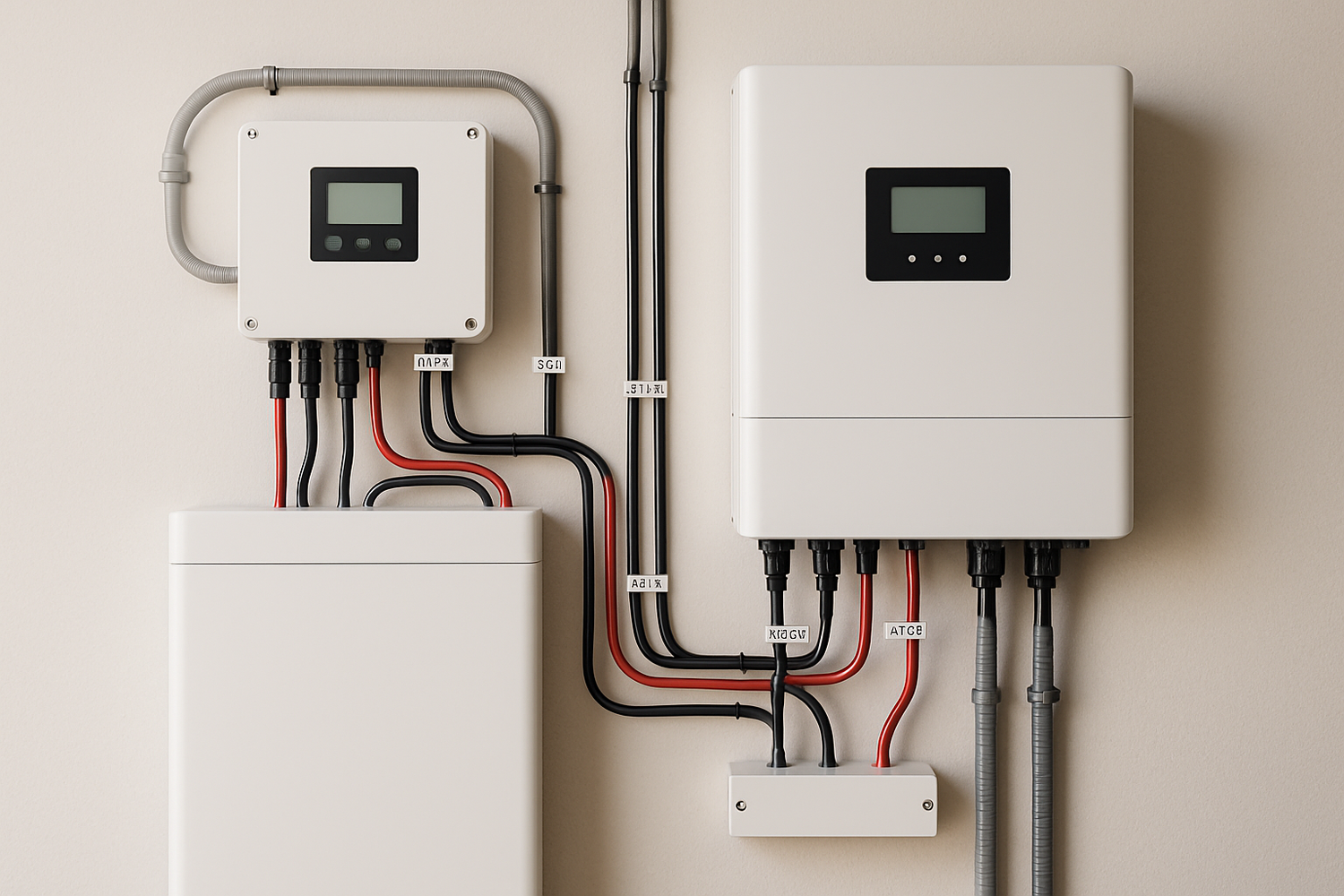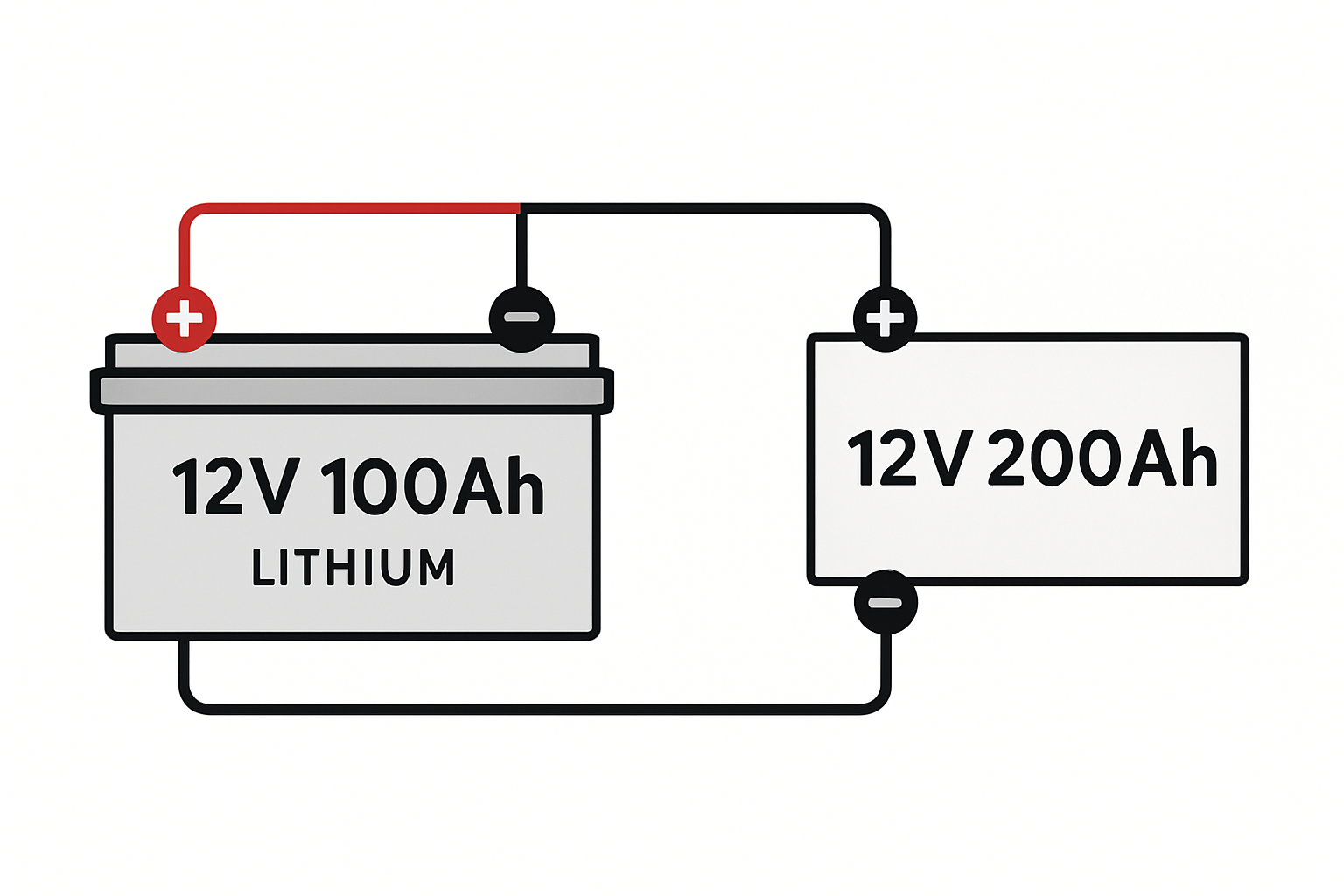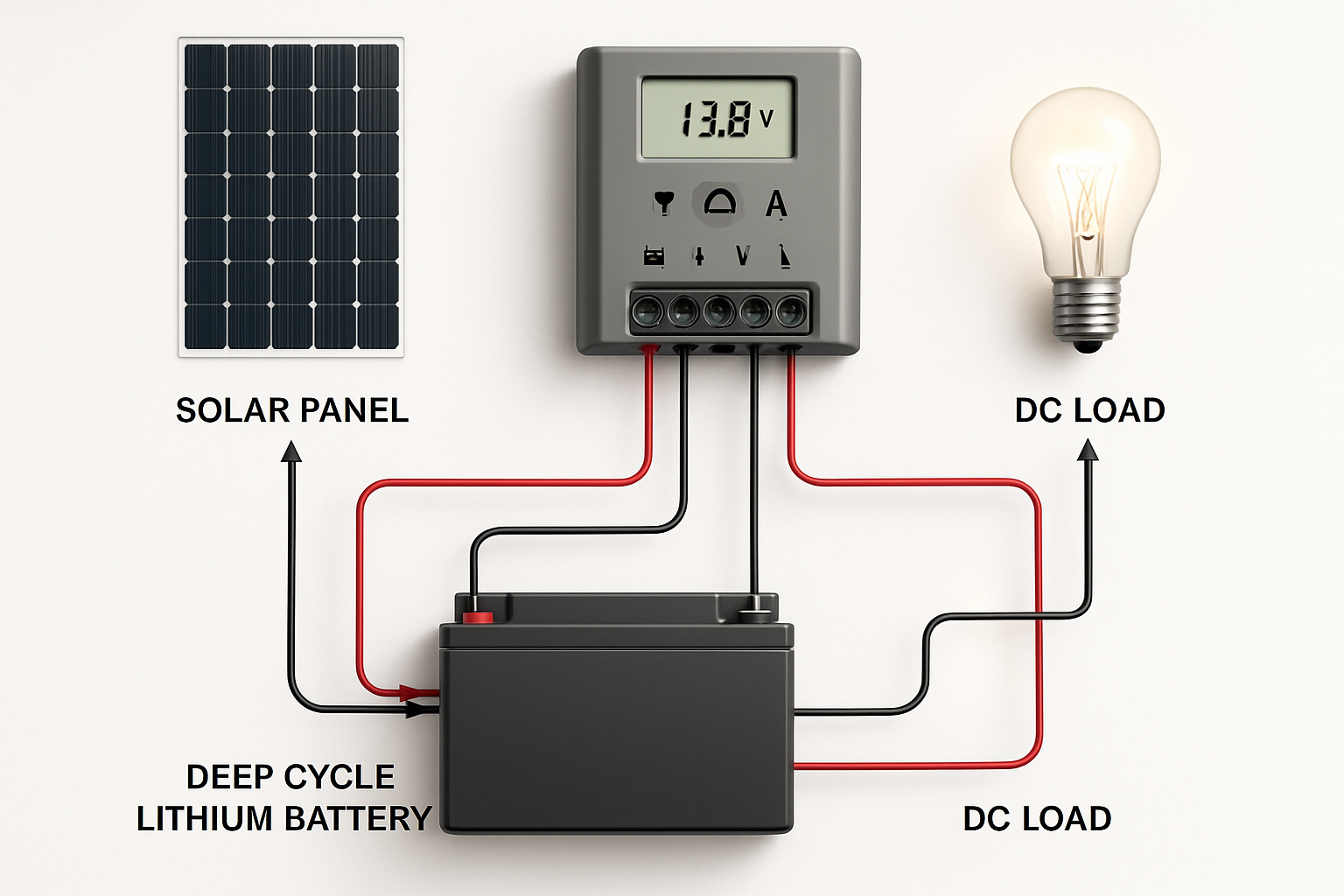A correctly installed home battery storage system is the cornerstone of energy independence. The wiring, in particular, determines not only the efficiency of your system but also its safety and longevity. At the center of this setup is the hybrid charge controller, the device responsible for managing the flow of energy between your solar panels, batteries, and home. This guide provides a detailed walkthrough for a professional-grade wiring installation.
Pre-Installation: Planning and Preparation
Proper planning prevents poor performance. Before you touch a single wire, dedicating time to preparation ensures a smooth and safe installation process. This phase involves matching your components, gathering the right tools, and understanding your system's electrical roadmap.
System Sizing and Component Matching
Your hybrid charge controller must be compatible with your solar array and battery bank. Check the controller's voltage and amperage ratings to ensure they align with your system's design, whether it's a 12V, 24V, or 48V configuration. All components, including wiring, fuses, and connectors, are considered part of the 'balance of system' (BOS). As noted in reports like the Solar Energy Perspectives by the IEA, these BOS components are critical for transforming solar energy into usable electricity for your home.
Essential Tools and Safety Gear
Working with electrical systems requires the right equipment. Having these tools on hand will make the process safer and more efficient.
- Wire strippers and cutters
- A high-quality wire crimper for secure connections
- A digital multimeter for voltage and polarity checks
- A socket and screwdriver set
- Insulated gloves
- Safety glasses
Safety is non-negotiable. Always de-energize circuits before working on them and wear appropriate personal protective equipment (PPE).
Understanding Your Wiring Diagram
Your system's wiring diagram is its blueprint. It illustrates the precise connection points for all components: solar panels, the hybrid charge controller, the battery bank, and the inverter. While the general sequence is often standard, always prioritize the manufacturer's diagram provided with your specific controller. This document contains critical details tailored to your hardware.
The Core Wiring Process: A Step-by-Step Approach
With planning complete, you can begin the physical installation. Following a precise sequence is vital for protecting your equipment and ensuring the system initializes correctly. A methodical and clean approach to wiring not only looks professional but also simplifies future troubleshooting.
Connecting the Battery Bank to the Controller
This is the first and most critical connection. You must connect your battery bank to the controller's battery terminals before any other component. This allows the controller to detect the system's voltage (e.g., 12V or 48V) and configure its operational parameters automatically. Install an overcurrent protection device, such as a circuit breaker or fuse, on the positive wire between the battery and the controller. Place it as close to the battery as possible for maximum protection.
Wiring the Solar Array
After the controller recognizes the battery, you can connect the solar panels. Wire the array to the controller's photovoltaic (PV) input terminals, paying close attention to polarity. Connecting positive to negative can damage the controller. A PV disconnect switch installed between the panels and the controller is also a recommended safety measure, allowing you to isolate the solar array for maintenance.
Integrating the Inverter and AC Loads
For most home battery storage systems, the inverter should be connected directly to the battery bank, not the load terminals of the charge controller. The controller's load terminals are typically designed for small DC loads only. High-power appliances draw more current than these terminals can handle. Connecting a large inverter directly to the battery, with its own fuse, ensures it has access to the full power of the battery bank to run your AC appliances.
Configuration and System Commissioning
Wiring is only half the task. Proper configuration, or commissioning, is what brings your system to life and optimizes its performance. This step involves programming the charge controller and conducting a series of checks to verify that everything is operating as intended.
Setting Up the Hybrid Charge Controller
Modern hybrid controllers require you to input specific parameters based on your battery chemistry. For a lithium iron phosphate (LiFePO4) battery, you must set the battery type and define the correct voltage points for charging stages like bulk, absorption, and float. Incorrect settings can reduce battery life or lead to system faults. To get the most out of these settings, it's helpful to understand the key metrics of solar storage performance, which dictate how efficiently your system operates.
System Checks and Verification
Once configured, perform a final series of checks before fully activating the system.
- Use a multimeter to confirm the voltage and polarity at the battery, PV, and load terminals on the controller.
- Double-check that all electrical connections are tight and secure. Loose connections can generate heat and create a fire risk.
- Turn on the circuit breakers sequentially: first the battery breaker, then the PV disconnect.
- Observe the controller's display to ensure it is reading the battery voltage and solar input correctly.
Advanced Considerations for Optimal Performance
A professional installation goes beyond basic connections. Incorporating advanced techniques and understanding modern system capabilities ensures your investment is robust, safe, and future-proof. These considerations contribute to a more resilient and efficient energy solution.
The Role of Battery Management Systems (BMS)
High-quality lithium batteries, such as LiFePO4 models, contain an internal Battery Management System (BMS). This electronic system is the battery's guardian, protecting the cells from overcharging, over-discharging, extreme temperatures, and short circuits. It is a key reason for the safety and long lifespan of modern lithium battery storage.
Grid-Forming Inverters and System Stability
Modern energy systems are evolving. Advanced battery storage systems often use grid-forming inverters. These inverters can create a stable, independent grid, providing power during an outage and even helping to stabilize the public grid. According to a report by the International Renewable Energy Agency (IRENA), storage with grid-forming inverters is a crucial enabler for modern, renewable-based power systems. This capability is becoming increasingly important as more renewable energy sources are integrated into our power infrastructure.
A Final Look at Your Energy System
Completing the wiring and configuration of your home battery storage system is a significant achievement. By following a structured process centered on safety, correct sequencing, and precise configuration, you build a reliable foundation for your energy independence. This system can provide clean, dependable power for years.
Disclaimer: This guide provides general information and is not a substitute for professional electrical advice. Always adhere to local electrical codes and consult with a qualified electrician when necessary. The information provided does not constitute financial or legal advice.
Frequently Asked Questions
What is the correct order to connect components to a hybrid charge controller?
Always connect the battery bank first, then the solar panels, and finally the loads or inverter. This allows the controller to correctly identify the system's voltage and configure itself accordingly.
How do I choose the right wire size for my battery storage system?
Wire size (gauge) depends on the current (amps) and the length of the wire run. Using undersized wires can cause voltage drop and is a fire hazard. Always consult an ampacity chart and your component manuals. Thicker wires (lower gauge number) are used for higher currents.
Do I need a fuse between the battery and the hybrid controller?
Yes, absolutely. An appropriately sized fuse or circuit breaker is a critical safety device. It protects against short circuits and overcurrent situations that could damage your equipment or cause a fire. It should be placed on the positive wire as close to the battery terminal as possible.





Leave a comment
All comments are moderated before being published.
This site is protected by hCaptcha and the hCaptcha Privacy Policy and Terms of Service apply.